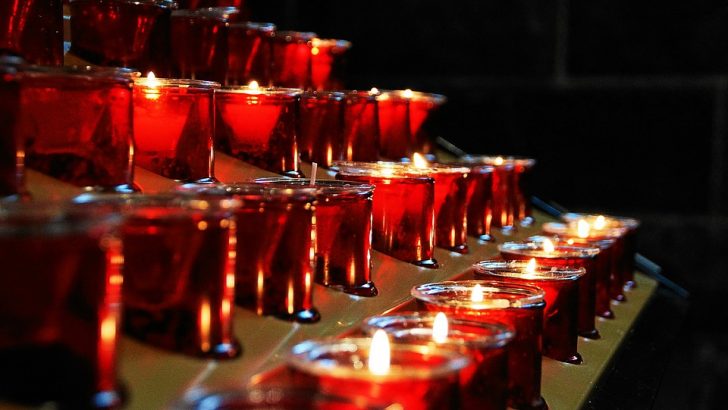Notebook
To light a candle or not to light a candle, that is the question. Or to put it more pointedly, when the HSE advises churches not to permit people to light candles, should the advice be heeded or ignored?
The HSE’s most recent comprehensive statement of ‘Covid-19 Guidance for Religious Services’ were last updated on July 9. In it, the advice is quite clear (page 10): “Candle lighting by the public should be suspended and display stands removed or cordoned off.”
As a result, gentle reader, when you visit your church, you are no longer permitted to light nightlights or shrine candles. Or are you?
Flammable sanitiser
The reasons why candle-lighting should be banned are quite logical. The danger of fire has always been an issue, but hands newly cleaned with highly flammable sanitiser are in even greater danger of combusting.
Additionally, when people put their hands into a receptacle of candles, traces of virus may remain there from the last person who visited; these traces may also remain on the metal surface of the shrine and lighters, if provided. Even in those churches where electric bulbs have replaced candles, the ‘touch danger’ remains.
No doubt the health authorities took these and many other factors into consideration in coming to their decision. But there are also reasons to retain the traditional practice. Lighting a candle is what Catholics most wish to do when they enter a church to say a prayer. Churches open for prayer are, for most Catholics, churches where candles may be lit. In addition, church authorities rely on the income from these candle stands to supplement the much-reduced collections.
Guidance
When the Covid-19 team in the parish where I minister pored over the updated HSE guidance, an immediate decision was taken to put our candle shrines out of reach. This decision was shared with other clergy, who nevertheless preferred to hold to previous guidance, indicating that old ‘cafeteria-Catholic’ approach much frowned upon (i.e. selecting the bits of guidance that suit us!).
Unfortunately, the outcome of our strict guidance in Newcestown was that very few people stopped by for private prayer, despite the safety of the space ensured by frequent sanitising; the church may as well have been permanently closed.
The decision had to be revisited. A risk assessment was carried out by the Covid-19 team and a compromise arrived at. Volunteers who had sanitised their hands were to place individual nightlights separately on the altar rails, so that in placing one nightlight, no other was touched.
An eight-hour nightlight was to be lit on the stand, from which new lights could be lit.
And the candle-lighting area was to be positioned at maximum distance from the entrance door, in the hope that those who call might pray first, so that their hands might be dry by the time they arrived at the candlestand.
Fingers crossed that it all works; like every other church pandemic enterprise, we survive ‘on a wing and a prayer’! (And the shrine money will help…)
***
As water is to a fish, so is our culture to us: it’s so essential that we are hardly aware of how much it influences us. This came to mind listening to Ray D’Arcy interviewing a quiz contestant on radio. The contestant wanted a ‘shout out’ to his son, who was to be Confirmed, remarking how relieved he was that the Confirmation was at last taking place. And the contestant and radio host both shared that sense of relief, agreeing that it seemed strange for the boy to be in secondary school and not yet Confirmed. It’s part of our culture.
Simple Confirmations might go viral
Confirmation Masses (‘take two’) took place here on the last Saturday of September, just four-and-a-half months late. Only the candidates and their parents attended, with our school principal sponsoring them all, as it used to be in years past.
We had two ceremonies on the day – the girls (of whom we had fewer) in the smaller church, the boys in the bigger venue. It was my first time Confirming a group of young people. I was amazed at how reflective and spiritual it was, stripped of the hangers-on and their cameras. Maybe there’s a pointer there to the post-coronavirus future?



